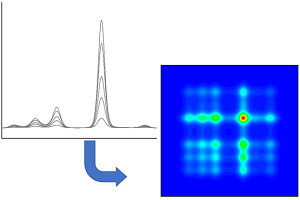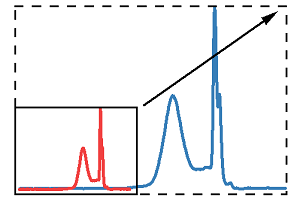
STS is as anionic surfactant that have been shown to accelerate the gelation of SF rather than the cationic and nonionic surfactant. Our previous studies demonstrated various formulations of SF-based hydrogels that can be induced by different agents, such as alcohols, an anionic surfactant, sodium tetradecyl sulfate (STS), and a phospholipid 1,2-dimyristoyl- sn-glycerol-3-phospho-(1′- rac-glycerol) (DMPG). Moreover, photopolymerization, and the chemical crosslinkers, such as carbodiimides, glutaraldehyde, or genipin were used. The gelation of SF through enzymatic crosslinking can be induced using enzymes, such as horseradish peroxidase or transglutaminase, in which the gelation can occur under physiological conditions, allowing the cell encapsulation during the gelation. Different strategies were introduced to induce the rapid gelation of SF.

The long gelation time of self-gelled SF may limit its application. Generally, SF hydrogels can be spontaneously formed from the regenerated SF solution within a couple of weeks to months by self-assembly processes. For 3D-printing, SF-based hydrogels showed an interesting feature which could be appropriate to serve as the material for 3D-printing, e.g., high water content, shape plasticity, suitable rheological properties, low surface tension and the ability of crosslinking. Different techniques have been reported for fabrication of various Thai SF formats such as film, scaffold, tube, sponge, microsphere, fiber and hydrogel.
#Fourier self deconvolution origin pro 8.5 iso
Moreover, the cytotoxicity of SF-based bone scaffold has been proved according to ISO 10993. From our previous studies, SF-based materials were developed and applied for various applications such as bone tissue regeneration, wound healing and drug-controlled release systems. Therefore, comparing to other natural polymers, SF possesses a slower degradation rate as well as higher mechanical robustness. The primary structure of SF contains a large number of glycine–alanine repetitive sequences which are accounted for the formation of thermodynamically stable β-sheet structure. Due to its characteristics, including biocompatibility, robust mechanical properties, biodegradability, sterilizability, high thermal stability and microbial resistance, SF has been widely studied in biomedical fields. Silk fibroin (SF) is a naturally derived fibrous protein produced by domesticated Bombyx mori silkworms. Natural-derived polymers are attractive candidates to be applied as bioink. In addition, the material should be able to encapsulate cells and maintain cell viability for long-term tissue culture.

The critical features required for printable materials are biocompatibility, bioactivity, biodegradation and mechanical stability. The development of printable material is one of the critical parts in 3D-printing researches.
#Fourier self deconvolution origin pro 8.5 software
Structural-complex scaffolds can be precisely designed using software and fabricated in a high resolution using a layer manufacture. Three-dimensional-printing technology has attracted considerable attention as a promising tool for tissue engineering and regenerative medicine. The 2SF/STS and 2SF/DMPG hydrogels showed a great potential to use as material for 3D-printing due to its rheological properties, printability and structure stability. The printed structure of 2SF/STS and 2SF/DMPG hydrogels exhibited high stability with high degree of structure recovery as 70.4% and 53.7%, respectively, compared to 2SF/self-gelled construct as 38.9%. In addition, the mechanical stability of printed structures after three-step post-treatment was investigated.

The 4-layer box structure of all 2SF-based hydrogel formulations could be printed without structural collapse. From the results, 2%wt SF-based (2SF) hydrogels showed suitable properties for extrusion, such as storage modulus, shear-thinning behavior and degree of structure recovery. In this study, SF-based hydrogels with different formulations and SF concentrations (1–3%wt) were prepared by natural gelation (SF/self-gelled), sodium tetradecyl sulfate-induced (SF/STS) and dimyristoyl glycerophosphorylglycerol-induced (SF/DMPG). From a previous report, silk fibroin (SF) has been used as a biomaterial for tissue engineering due to its biocompatibility, biodegradability, non-toxicity and robust mechanical properties which provide a potential as material for 3D-printing. Three-dimensional (3D) printing is regarded as a critical technology in material engineering for biomedical applications.


 0 kommentar(er)
0 kommentar(er)
